Real Projective Space
The real projective space
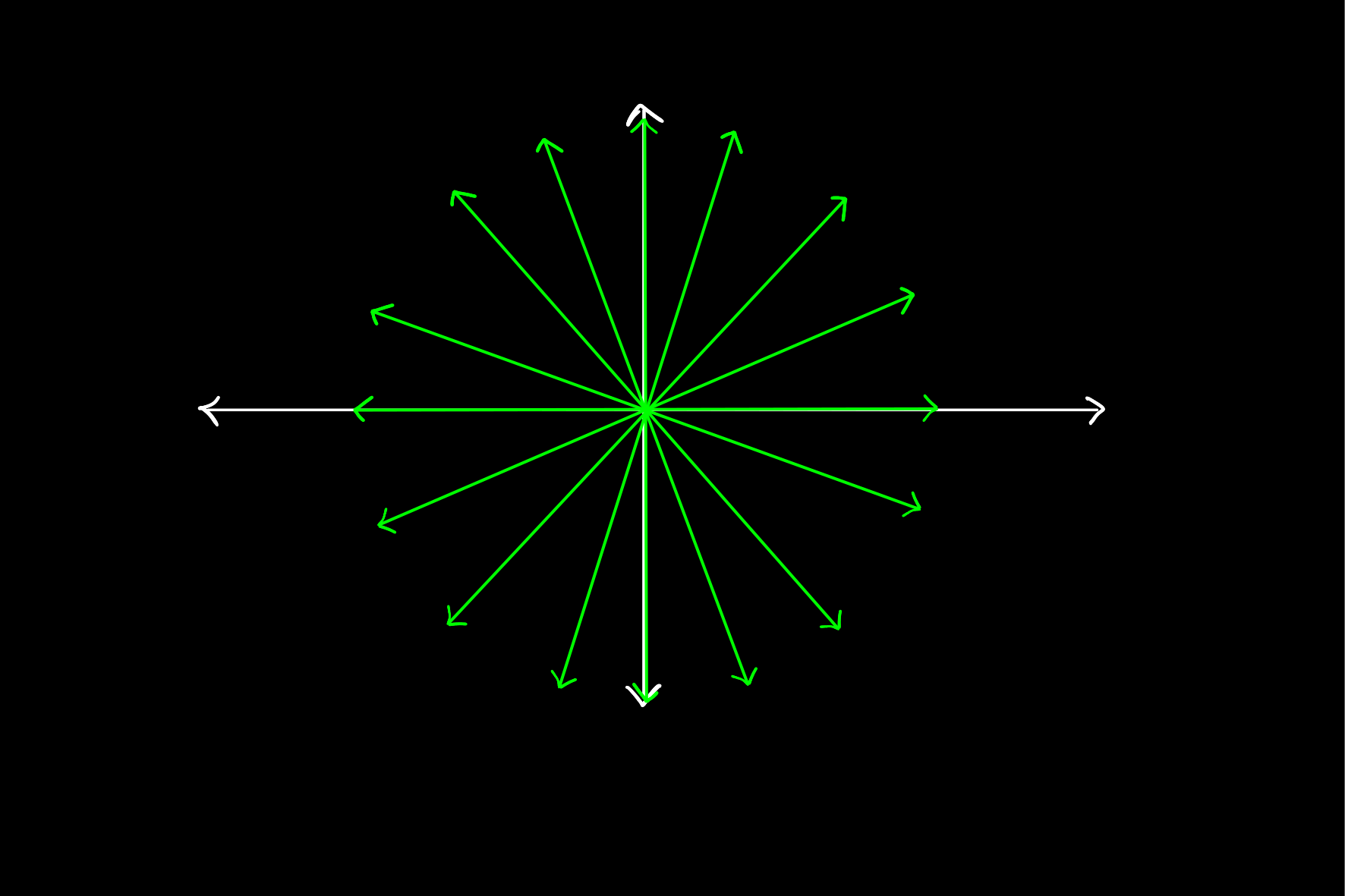
Homogeneous Coordinates
There are many ways we can parameterise such a set, one of which is using what are called homogeneous coordinates, which are vectors whose span is the desired one dimensional subspace, unique up to a scalar multiple.
Specifically, we define the equivalence relation
The homogeneous coordinates for the equivalence class containing
Gradient
Another way is to use the gradient of the line, which assigns a unique real number to each one dimensional subspace of
given by:
As the Unit Half Circle
The one dimensional subspaces of
This is because of the one to one correspondence that projective points have with half of the unit circle.
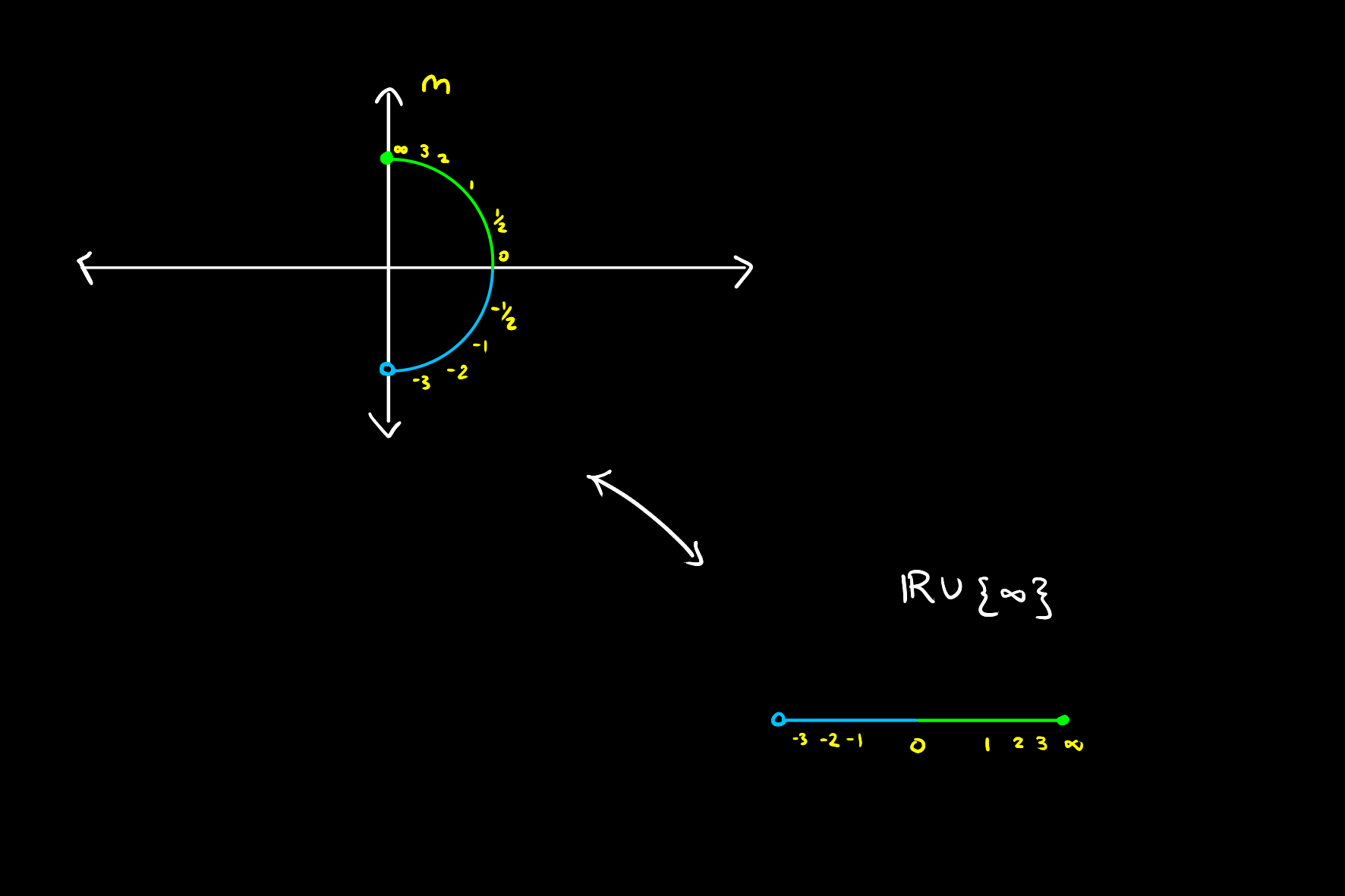
This is where the name projective space comes from. Every point in
Again directly from the definition,
Homogeneous Coordinates
We can similarly parameterise projective points in
As
There is a one to one correspondance between:
given by
As the Unit Half Hemisphere
The parameterisation by homogeneous coordinates allows viewing the set of projective points in
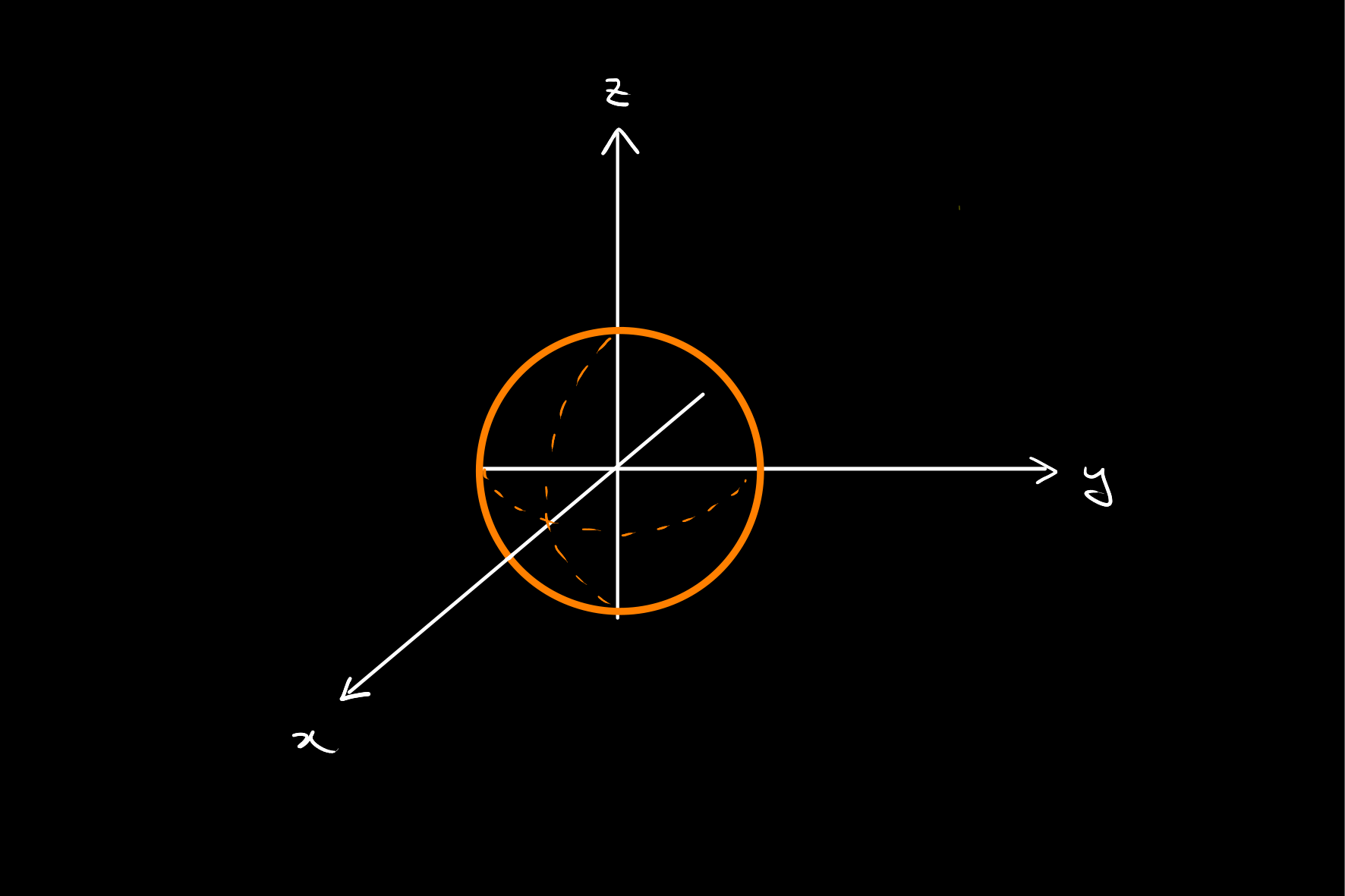
Thinking projectively, imagine being at the origin, and looking along the
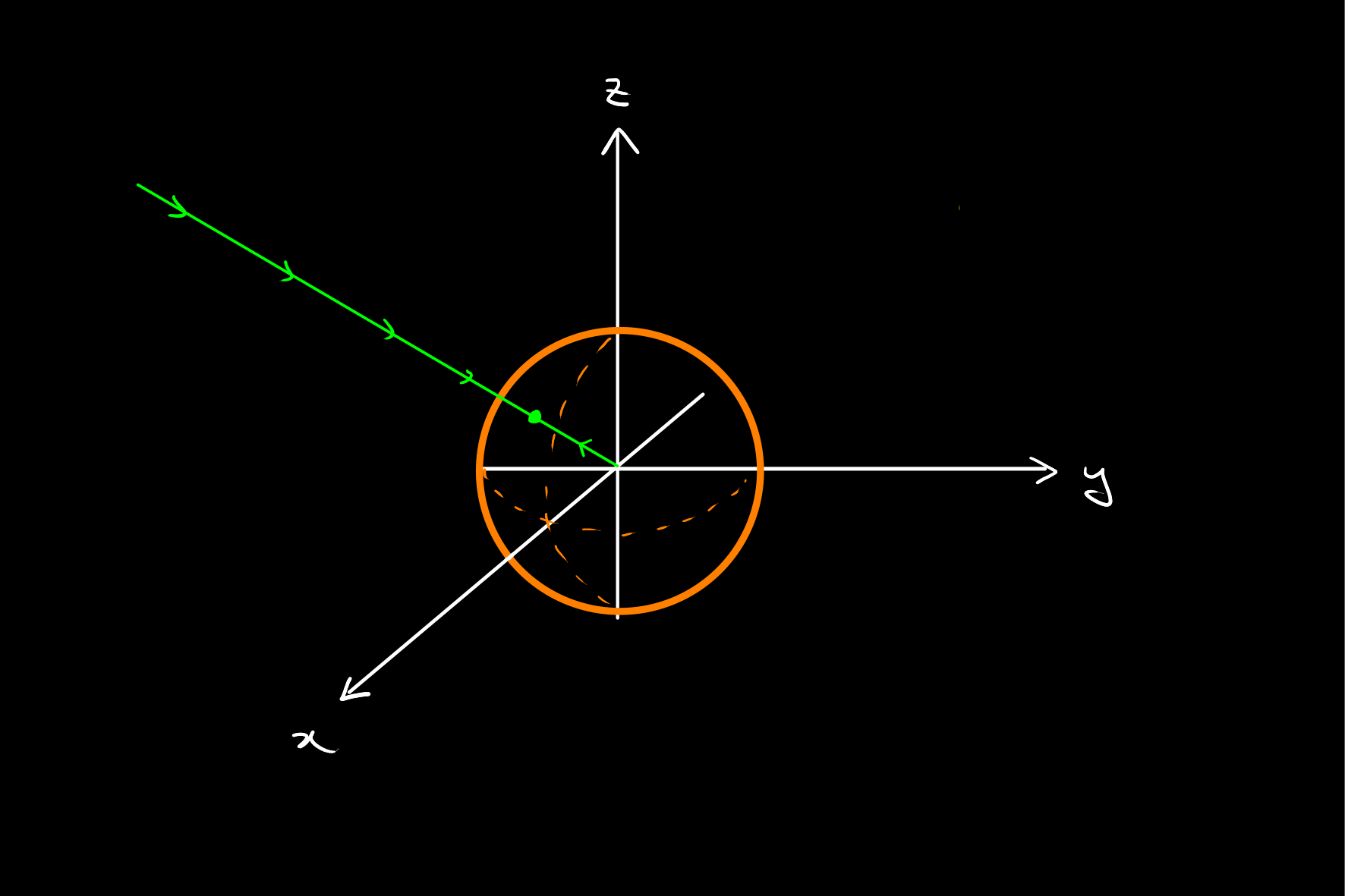
Similarly, a plane in
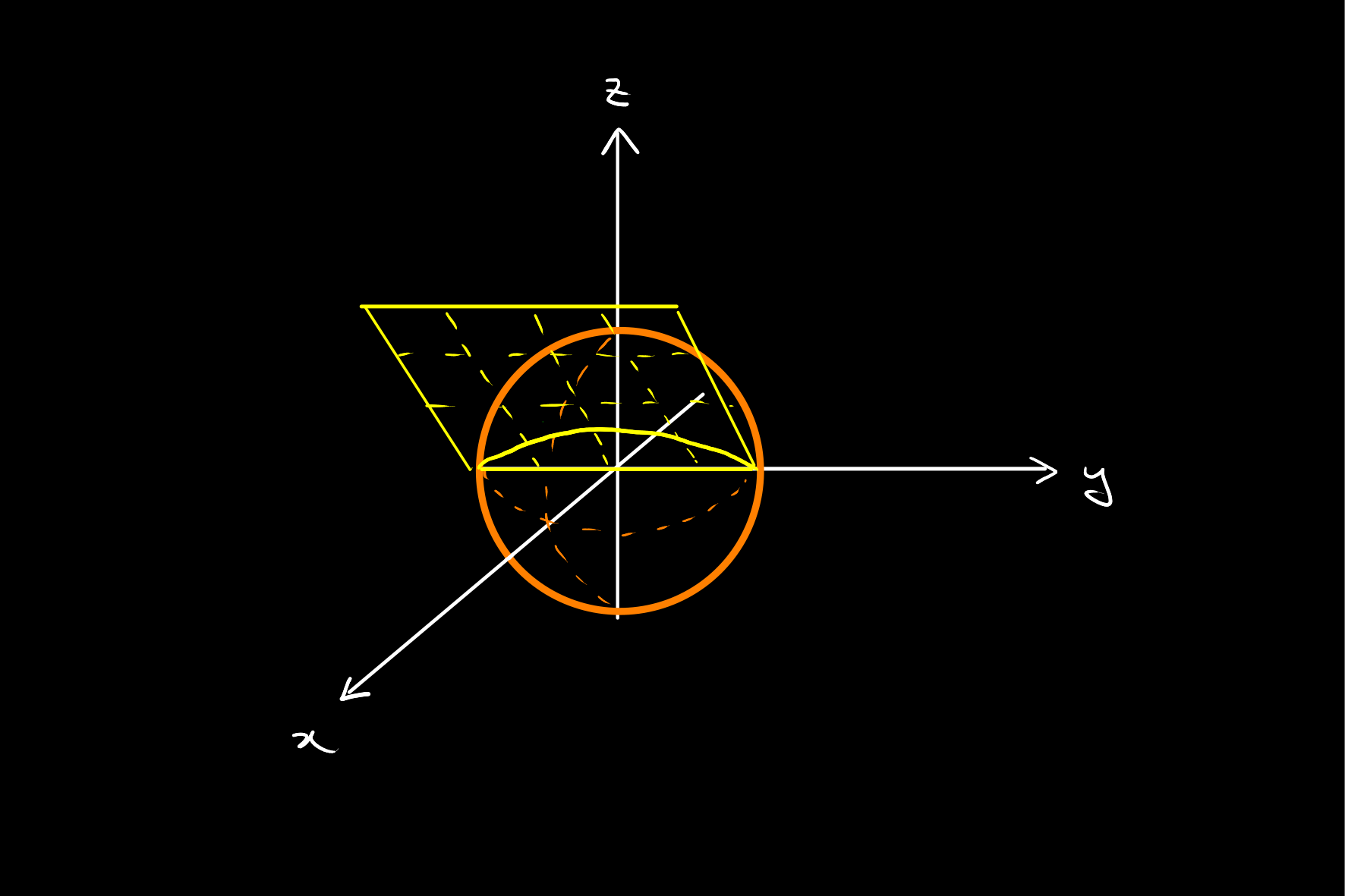
For example,
Projective lines are often parameterised as the orthogonal complement of the one dimensional subspace represented by a projective point. That is,
analogous to the point normal form of a plane.
Coincident Line
Given any two distinct projective points, which represent one dimensional subspaces of

Hence finding the projective line through two projective points is a matter of taking a cross product.
For example, the projective line through
and therefore given by

Intersection of Lines
Given any two distinct projective lines, there is a single projective point at their intersection.
In this below example, the projective point in blue lies at the intersection of the yellow and green projective lines.
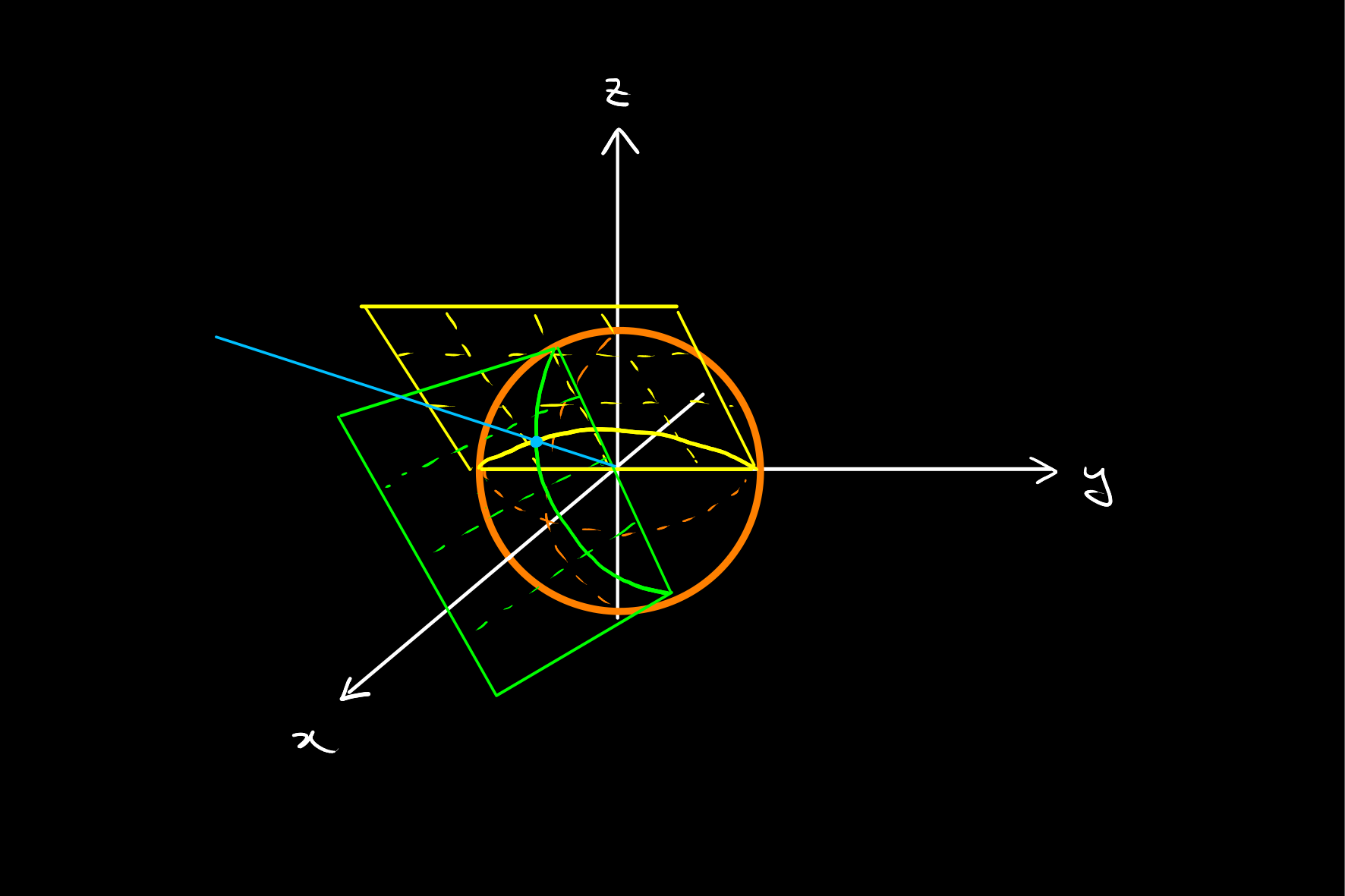
Similarly to the case of calculating the projective line through two projective points, calculating the intersection of two projective lines is just a cross product calculation.
Line at Infinity
The set of points of the form
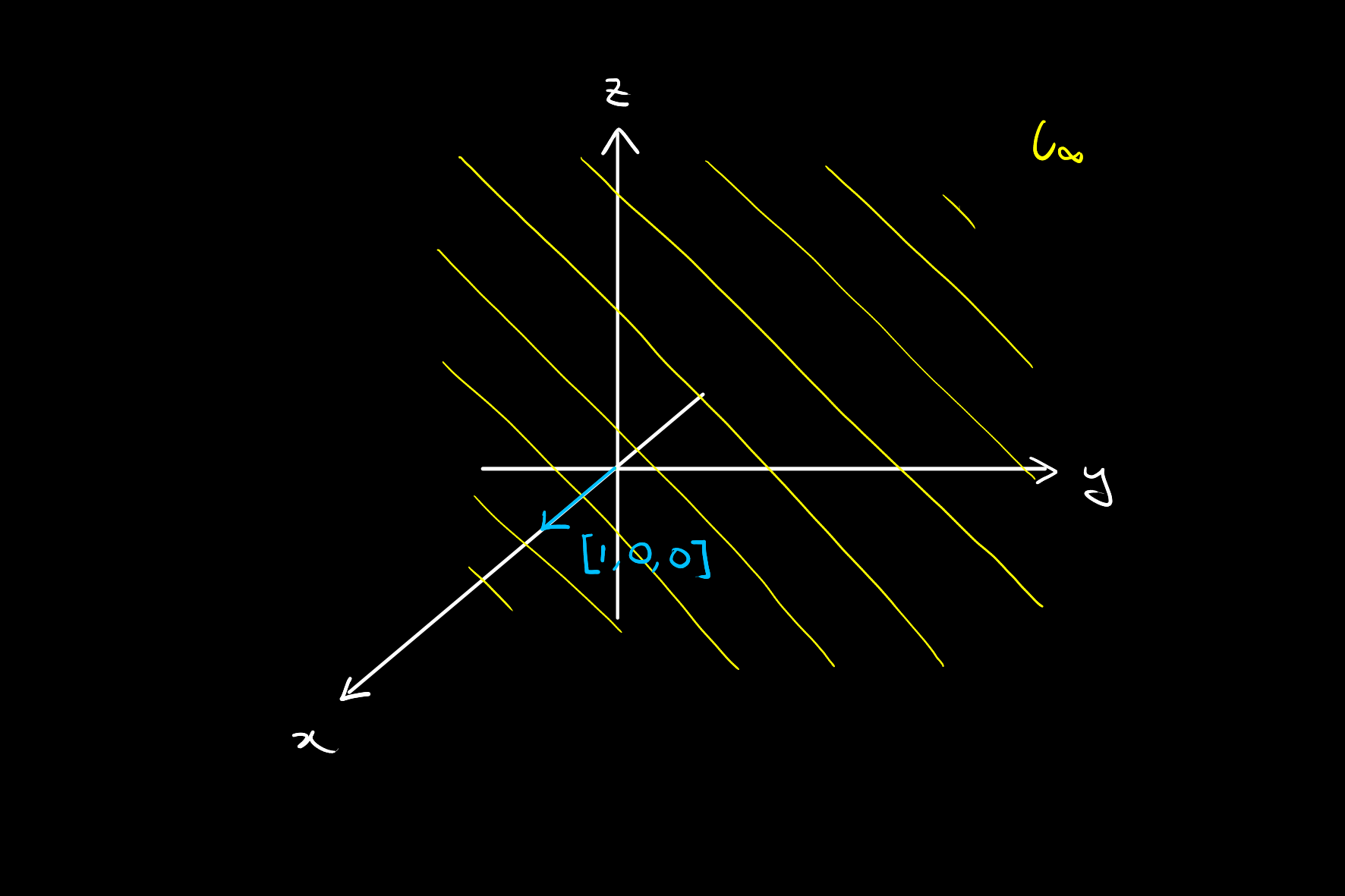
Every line which is not
Affine Points
The points which are not points at infinity are called affine points. This means their first component is non-zero, and hence can be written as
Corresponding Euclidean Line
A given projective line
Parallel Lines
Two projective lines in the real projective plane are said to be parallel if they appear parallel from the projective perspective (looking outwards from the origin). Two distinct lines are parallel if and only if they meet at a point at infinity.
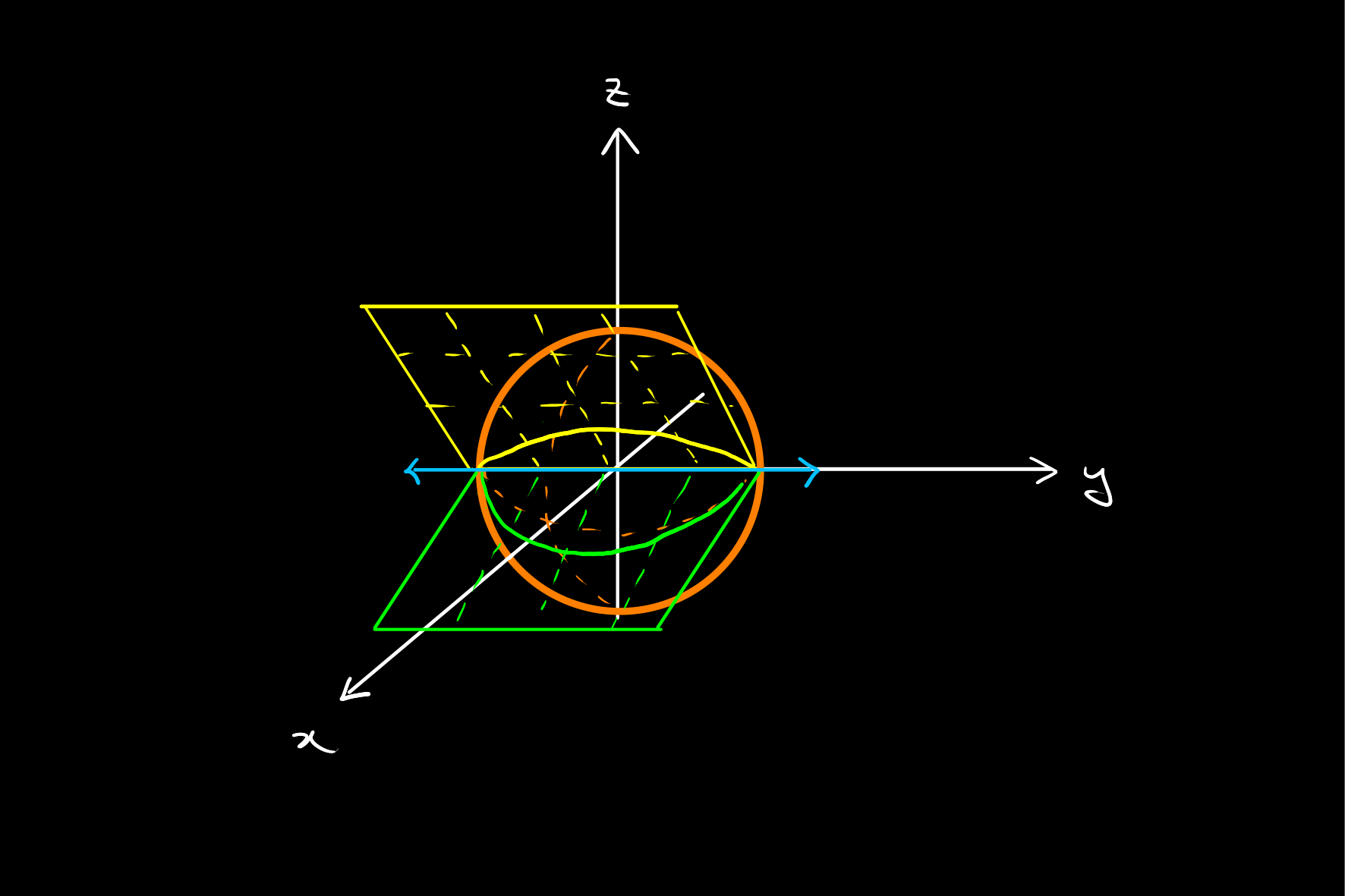
We can determine if two lines are parallel by checking if the
This means that the two lines
This means their corresponding Euclidean lines are parallel in the normal geometric sense.
One can think about these parallel lines as like longitudinal lines, which meet only at the poles.
The above ideas generalise to